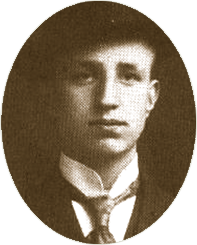 The life of a lambic brewer
The life of a lambic brewer

-
By René Lindemans, representing the fifth generation of our family
My parents' house was both a farm and a brewery that produced lambic. We owned 30 hectares of land. To produce our lambic, we used our own wheat and we pumped water from our own spring.
Like today, we brewed from October to May, up to four times a week. Each brew produced 14 250-litre barrels of lambic.
We did not store much beer here, we took it to bars in the area, within a ten-kilometre radius around the farm. The horse-pulled cart could carry seven barrels that had been rolled and pushed onto the cart by hand. Only the last one on was secured. Lambic matured in the bars' cellars. -
You had to be strong to work in the brewery. An empty beer barrel weighed 50 kilos empty and 300 kilos full. Three of us would deliver the barrels to the bars. One in the front and two in the back holding the barrel down with ropes. In some bars, the cellar staircase was very narrow. Taking the barrels down was a real ordeal. Once empty, each barrel was cleaned and rinsed by hand. Back then, the barrels didn't have iron rings, they were held together with wooden slats. A lot of our barrels came from France. Some dated back to 1900.
-
Many farmers in the area came to work here to make ends meet. And to drink lambic, obviously. Before, everything was done by hand. And it was no small matter grinding the grain, pouring it into the vat, rinsing the bottles...
We worked hard, but we also played a lot and got up to a lot of mischief. Saturday was chore day: we had to clean the farmyard. Robert, my neighbour, often came to play with his brother, Marcel. Pierre, another neighbour, would also come. We would play football with a foam ball. Once we put fifty chickens in a barrel. Some didn't survive...
-
My aunt, my father's sister, was not married and wanted to become a nun. My grandfather did not agree; he felt she would be more useful on the farm. So she had to keep on living at home.
In my father's time, everything was slower, we took our time. And people helped each other. We didn't celebrate a lot, but when there was a family gathering, the beer flowed freely.
-
My father died in 1956 when he was only 55 years old. I was in lower sixth form. We stopped the farm activities to devote ourselves entirely to the brewery. I went to brewing school. One year after my father's death, in 1957, my neighbour and friend Robert came to work in the brewery. That was when we bought our first lorry.
We delivered lambic to about fifteen gueuzeries. A gueuzerie did not brew its own beer, but produced gueuze by blending our lambic with that from other breweries. When the gueuzeries began to decline, we began blending our own gueuze. First with second-hand equipment, and we would go get the bottles ourselves. That is how we gradually developed.
-
Gueuze fermented in the bottle; and on hot summer days, the cork could not always withstand the pressure. You can imagine the unpleasant consequences that may have had. In some bars' cellars, dozens of bottles would pop open. For our customers, that was not acceptable. That is why we were the first to launch the double security system: cork plus cap.
We brewed our first kriek in 1961. We used Schaerbeek sour cherries that we let mature in barrels filled with lambic. Over the years, we needed more and more cherries.
-
To increase our capacity, we procured the barrels from the gueuzeries, which could contain 600 to 700 litres each. At one point, we had 1,000 barrels stored on the farm. In the winter, that could be a problem because the roof, which dated back to 1875, was merely a wooden frame covered with tiles. There was no insulation to protect from the cold or the summer heat. Gradually, we traded the barrels for metal tanks. And we insulated the roof.
In the 70s, we underwent a real commercial boom. We started to export to Paris. Our importer was called 'Artisans de la bière' (beer craftsmen). One day, we were contacted by an American wine merchant, Charles Finkel. A few years later, our first container of gueuze and kriek crossed the Atlantic.
-
Sometimes we would have to get up at night to brew the beer. The machines consumed so much electricity that during the day, the electrical system could not handle it.
Belgian excise tax officials would come 75-100 times every year, which translated to every 3 to 4 days. At the time, we had to pay excise duties before receiving any profits.
In the 90s, we welcomed our first supermarket chain among our customers: Delhaize.
Up until the 90s, Lindemans employed 7 people. Today, there are 50 employees on the team. Peter Renders, Robert's son, is now the brewmaster at Lindemans. A worthy successor to his father!
